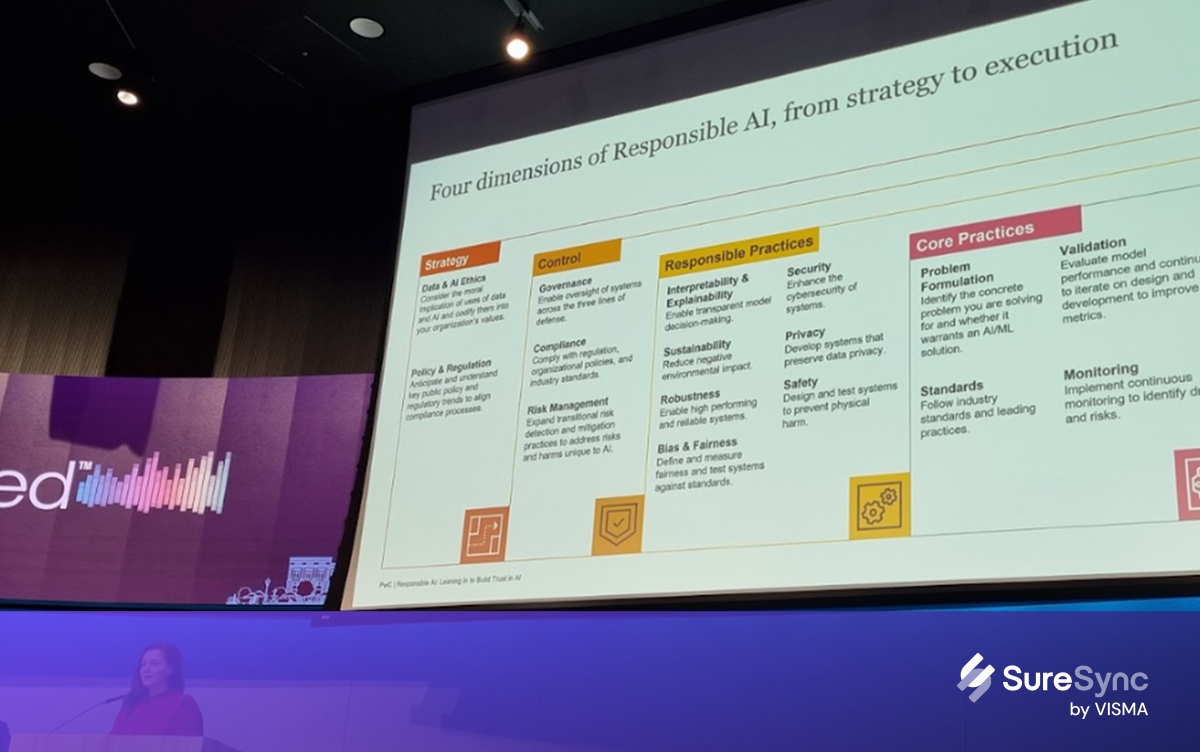Comparable, reliable and complete - the CSRD forces corporates to step up on sustainability reporting
Companies are preparing for the EU’s Corporate Sustainability Reporting Directive (CSRD), effective January 2024. The CSRD aims to ensure that companies publicly disclose reliable and comparable sustainability information that meets the needs of investors and other stakeholders.
In this blog
Further reading below 👇
Shortcomings of the NFRD
The CSRD requires all large companies in the EU to create standardised, audited and structured sustainability reports. For many companies, it will be the first time they will have to report on sustainability. Other companies have a head start, as they already have reported according to the CSRD’s predecessor, the Non-Financial Reporting Directive (NFRD).
The NFRD came into force in 2014 and requires around 11,700 large listed companies and financial institutions to report on how sustainability issues affect their business and impact on people and the environment. These organisations must disclose information about their business model: policies, outcomes, risks, risk management and key performance indicators. Furthermore, they must report on their social responsibility and treatment of employees; respect for human rights; anti-corruption and bribery; and diversity on company boards regarding age, gender, educational and professional background policies.
However, in 2019, a consultation on the NFRD run by the European Commission identified shortcomings in the directive’s implementation, such as a lack of comparability, reliability and relevance of the non-financial information provided.
The commission noted that users of non-financial information, mainly investors, rating agencies and civil society organisations, demand more and better information from companies about their social and environmental performance and impacts than those provided under the NFRD.
Backed by the strong support for expanding and strengthening rules on sustainability reporting, the commission published proposals for the CSRD on 21 April 2021. On 21 June 2022, the EU Parliament and Council announced they had reached a provisional political agreement on the directive.
CSRD vs NFRD
One of the most significant changes the CSRD directive brings is its extended scope. The CSRD requires an estimated 49,000 companies to report on sustainability compared to the 11,700 required by NFRD. These are European companies that meet two out of three criteria:
- At least 250 employees;
- At least €40 million in turnover;
- At least €20 million in their balance sheet total.
Small and medium enterprises (SMEs) are only included when listed, except for micro-enterprises. Micro-enterprises have much simpler standards to adhere to than those applying to large companies and will be exempt till 2026, with the option to opt out till 2028 so that they have more time to prepare.
By a June 2022 amendment, the rules will apply to non-EU companies with a net turnover of more than €150m and at least one subsidiary or branch in the EU.
In addition to the extended scope, there are some other significant changes. The three most noticeable are:
- A requirement to report on a full range of sustainability information relevant to the company's business. Reporting must be in line with the mandatory EU sustainability reporting standards (ESRS) that the commission is currently developing;
- The introduction of mandatory audits for reported sustainability information in compliance with the ESRS mentioned above. Initially, this is a “limited assurance” review. This means that no faults are found in the reporting. The intention is to change this to “reasonable assurance” to indicate that the information contained in the report is reliable;
- Listed companies must prepare their management reports in an electronic format and tag the sustainability information.
Leading the world in ESG Reporting
 Visma Connect recognises that data is the world’s most valuable resource today. The company attended the XBRL Europe Conference as one of the companies at the forefront of standard business reporting and taxonomies. These technologies are increasingly used in sustainability reporting as well. Demand for structured sustainability data exchange is rapidly growing for exchange between companies and submitting this information with supervisory authorities; for these purposes, the language of choice is XBRL.
Visma Connect recognises that data is the world’s most valuable resource today. The company attended the XBRL Europe Conference as one of the companies at the forefront of standard business reporting and taxonomies. These technologies are increasingly used in sustainability reporting as well. Demand for structured sustainability data exchange is rapidly growing for exchange between companies and submitting this information with supervisory authorities; for these purposes, the language of choice is XBRL.
Waiver
Companies with large or complicated supply chains can opt for a three-year waiver to collect environmental and social data from their suppliers; as long as they state their intent to obtain the data as soon as possible.
CSRD’s reporting standards
EU Member States must transpose the CSRD into national law 18 months after it enters into force.
The precise details of what kind of sustainability information must be reported are not ready yet.
The European Commission has tasked the European Financial Reporting Advisory Group (EFRAG) with drafting the new European Sustainability Reporting Standards (ESRS). EFRAG works with the Global Reporting Initiative (GRI) to develop these standards.
EFRAG will roll out the standards in two stages. The first stage outlines general reporting standards for all companies on environmental, social and governance (ESG) issues. The second stage details specific industry standards and exceptions for SMEs. A consultation on the first stage standards ended on 8 August. Although amounting to around 400 pages, the standards cover well-known ESG issues, in line with the commission’s objective to mirror existing reporting requirements.
For example, the environmental standard builds on the well-known Greenhouse Gas Protocol metrics. The GHG Protocol classifies Greenhouse Gas emissions (GHG) into three ‘scopes’.
- Scope 1 emissions are direct emissions from owned or controlled sources. Think of heating and vehicle usage.
- Scope 2 emissions are indirect emissions from the generation of purchased energy.
- Scope 3 emissions are all indirect emissions in the company's value chain.
Business implications
The CSRD will likely result in a large amount of work for the companies that must comply with it. CSRD uses standards that are already familiar to many. However, reading and understanding the ESRS, working out how it applies to your company and then organising reporting is a significant and complicated task.
Companies must ensure that their reporting is complete and comparable across industries and countries. Reporting should be timely and include all operating locations. Information integrity sets high standards for internal processes and systems.
However, if these criteria are met, the CSRD will increase European companies' comparability, completeness, and reliability of sustainability reporting. It will help them steer their business in a sustainable direction, and the benefits of sustainability will become apparent. It will also ease their access to financing since many investors set strict sustainability criteria for lending.
SFDR
The Sustainable Finance Disclosure Regulation (SFDR) is a European regulation introduced to improve transparency in the market for sustainable investment products, prevent greenwashing and increase transparency around sustainability claims made by banks, asset managers, insurance companies and pension firms. To comply with the SFDR, these institutions need comparable and reliable information about the companies in their portfolio. If available, this information is often incomplete and unstructured, giving financial institutions a headache and lots of extra work. Filling this information gap is one of the aims of the CSRD.
The ultimate goal is to bring the quality of sustainability reporting to the same level as financial reporting. This will help embed consideration of environmental and social issues right at the heart of business.




